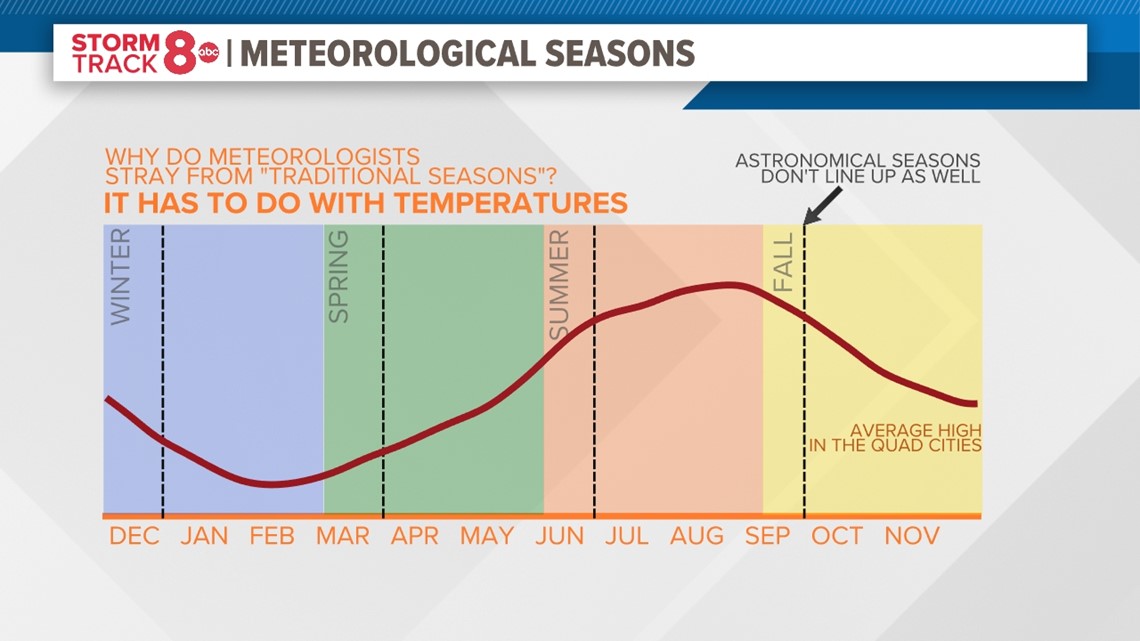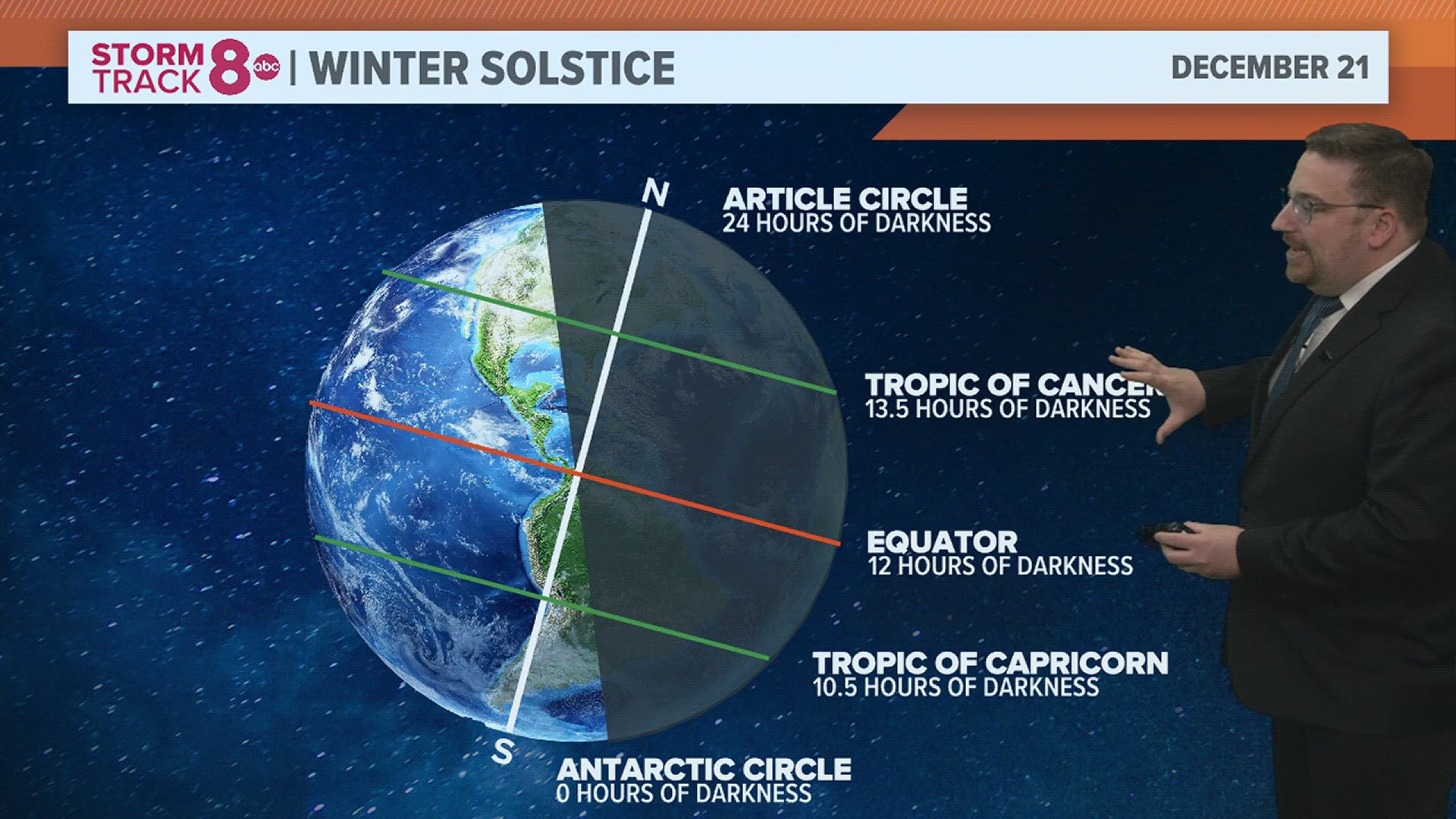MOLINE, Ill — Happy New Year! Now that we have moved past the winter solstice, also known as the shortest day of the year, we're flipping the script. The amount of daylight each day from now up until the summer solstice in June will continue to increase. Our temperatures will continue to trend colder for the next few weeks despite the increased length of day. Janice from Barstow, Illinois asks, "Why do the temperatures get colder after the Winter Solstice and the days are getting longer?" Let's dig in!
Indeed, the coldest part of the year in the Northern Hemisphere on Earth occurs just a few weeks after the winter solstice. This is because of two things:
Thermal inertia
The Earth can be thought of as a giant rock with bodies of water mixed in. Sunlight is our primary source of warmth, and some of that warmth radiates back into space at times. Even though the amount of daylight increases following the winter solstice on Dec. 21, the earth continues to lose more heat than it gains due to the "coldness" from spending longer hours in darkness and a lower sun angle during the earlier weeks before winter.


It takes time for these changes to take place, hence there is this noticeable lag. The temperature will keep dropping until the balance between incoming solar energy from the sun and outgoing heat radiation into space eventually tips the other way, giving us a gradual warming trend. This is another reason meteorologists like to use and refer to 'meteorological seasons' rather than astronomical ones, as shown in the chart above.
The ocean's role
The northern hemisphere surface contains roughly 60% water and only 40% land. Oceans have a large impact on regional climate due to their ability to hold heat. They absorb and store significant amounts of heat during the summer. In the winter, this heat is slowly released back into the atmosphere, somewhat slowing the decline in temperatures. It takes even longer for this ocean heat to reach significantly into areas of land, further contributing to the delayed cold during the winter months. Even Lake Michigan near Chicago can have an influence!
Wrapping it up
- Winter solstice is the shortest day, lowest sun angle, and most heat loss
- Heat loss continues after winter solstice due to thermal inertia
- Increasing daylight and slower decline eventually lead to warmer temperatures
- Release of heat stored in the oceans further delays the coldest period
Have a question that you would like me to answer for an upcoming Ask Andrew segment? Submit it, here!

